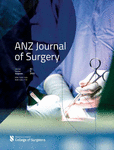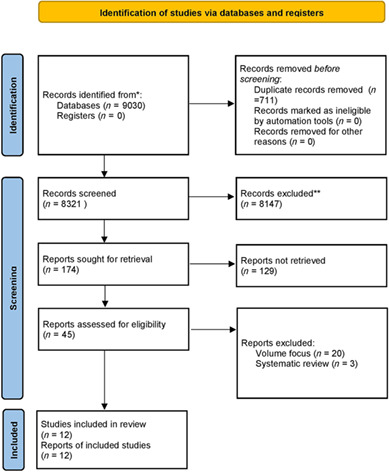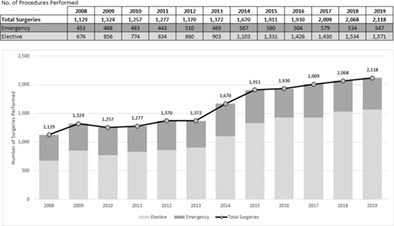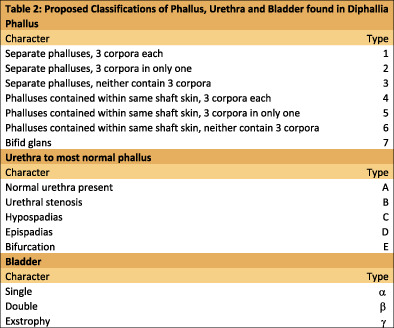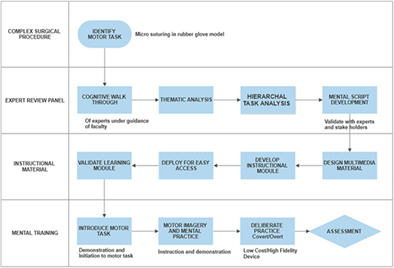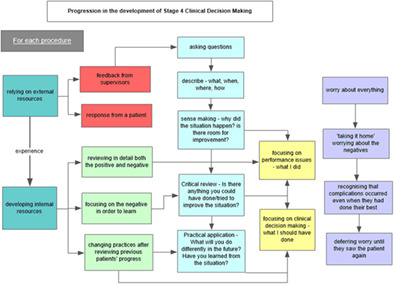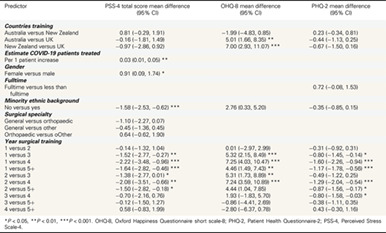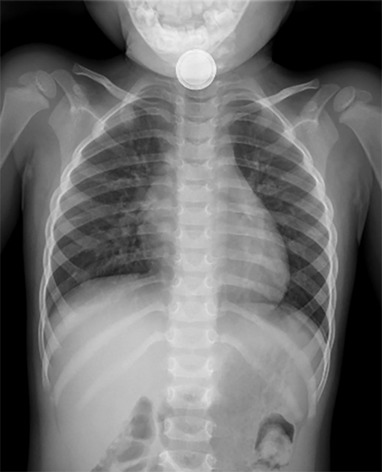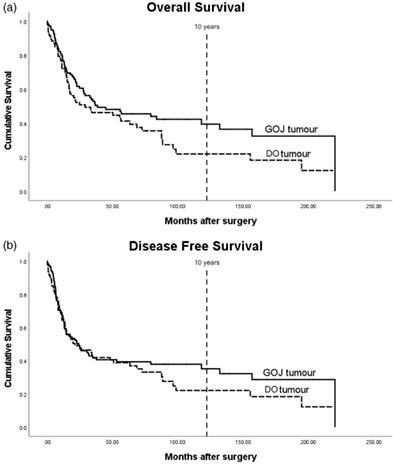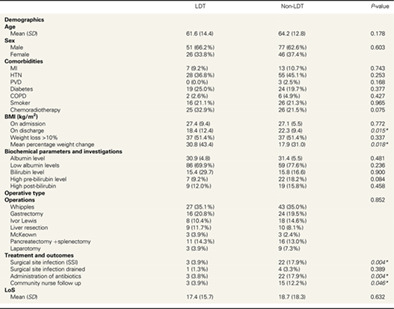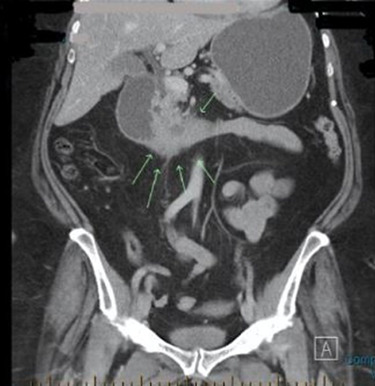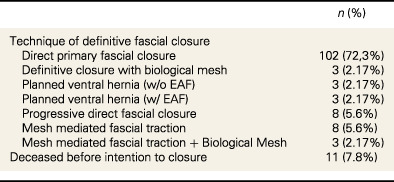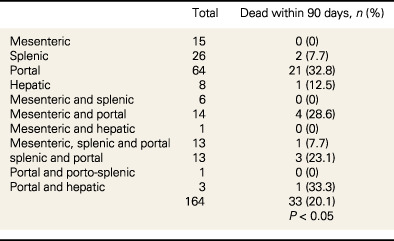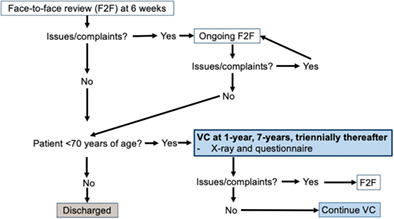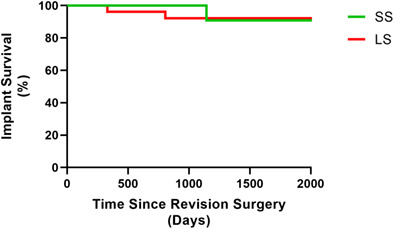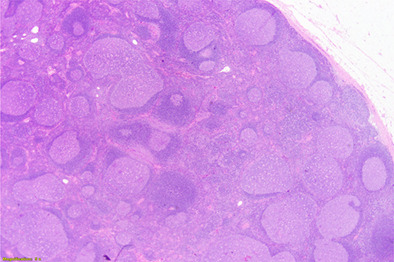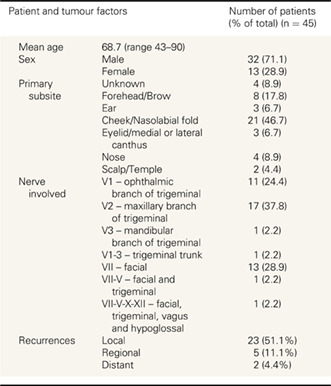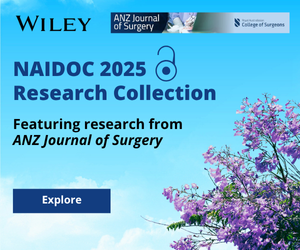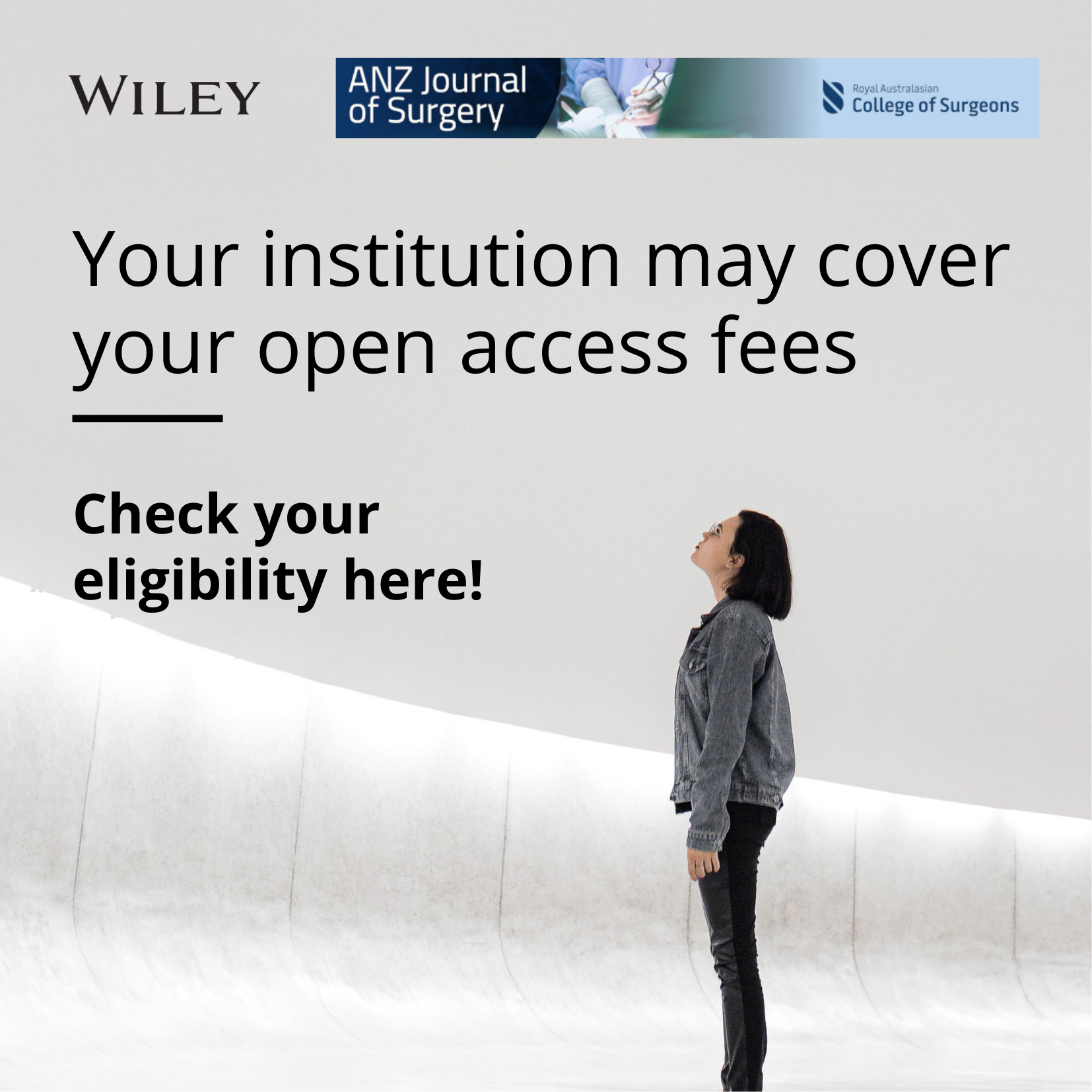Journal list menu
Export Citations
Download PDFs
ISSUE INFORMATION
EDITORIALS
It's time we measure more than Australia's gastrectomy mortality rate
- Pages: 1972-1973
- First Published: 12 September 2022
The challenge of colorectal surgery in the elderly
- Pages: 1974-1975
- First Published: 12 September 2022
PERSPECTIVES
Perspectives on rectal cancer surgical prehabilitation: time to consider the pelvic floor?
- Pages: 1976-1977
- First Published: 12 September 2022
Total neoadjuvant therapy (TNT) in rectal cancer: to or not to give?
- Pages: 1978-1979
- First Published: 12 September 2022
The role of MRI scans in selective lateral pelvic lymph node dissection
- Pages: 1980-1981
- First Published: 12 September 2022
Clostridioides difficile infection following ileostomy reversal – can we clean up our act?
- Pages: 1982-1983
- First Published: 12 September 2022
Vasculogeriatrics: embracing shared care with our colleagues in geriatric medicine should not be a threat
- Pages: 1984-1985
- First Published: 12 September 2022
Can quality of life predict survival and value-based care in lower extremity arterial disease?
- Pages: 1986-1987
- First Published: 12 September 2022
SPECIAL ARTICLE
Royal Australasian College of Surgeons Rural Health Equity Strategic Action Plan: excellence through equity
- Pages: 1990-1994
- First Published: 05 August 2022

Wherever there are people there will be a need for surgical care. Rural people have all kinds of problems and need all kinds of surgeons. The Royal Australasian College of Surgeons (RACS) Rural Health Equity Strategic Action Plan (RHESAP) was endorsed by Council in December 2020. The goal is to increase the rural surgical workforce and increase access to care, through providing motivated surgeons with the training they need to work where they are needed most.
REVIEW ARTICLES
Quality performance indicators for the surgical treatment of gastric adenocarcinoma: a systematic review
- Pages: 1995-2002
- First Published: 02 March 2022
Laparoscopic versus open surgery for elderly patients with colorectal cancer: a systematic review and meta-analysis of matched studies
- Pages: 2003-2017
- First Published: 15 August 2022
To compare clinical and survival outcomes between laparoscopic versus open surgery in elderly colorectal cancer patients. Findings suggest that in elderly subjects with colorectal cancer, laparoscopic surgery appears to be more beneficial than open surgery and should be prioritized, subject to availability of required technical skills and facilities.
The changing landscape of general surgery in the elderly – trends over a decade in a tertiary centre in Singapore
- Pages: 2018-2024
- First Published: 03 April 2022
Towards a complete cycle of care: a multidisciplinary pathway to improve outcomes in complex abdominal wall hernia repair
- Pages: 2025-2036
- First Published: 30 May 2022
The increasing burden of complex abdominal wall hernia (CAWH) has inspired the application of multidisciplinary care principles; however, this remains a relatively novel concept. The aim of this study is to perform a systematic review of the literature on multidisciplinary care for patients with CAWH, and to determine the necessary constituents of the multidisciplinary team for this patient cohort. Based on our results, we propose a suitable multidisciplinary pathway that can be applied in an Australian tertiary centre.
Bochdalek hernias in the adult population: a systematic review of the literature
- Pages: 2037-2042
- First Published: 31 March 2022

Bochdalek hernia is characterized by the protrusion of viscera into thorax through the posterolateral section of the diaphragm. It is an extremely rare type of congenital diaphragmatic hernia, it rarely concerns adults, and manifests with vague gastrointestinal or pulmonary symptoms. Surgical approach is the preferred method for their management with open procedures being preferable at emergency cases, while minimal invasive approach necessitates experienced centers.
Recurrent testicular torsion post orchidopexy - an occult emergency: a systematic review
- Pages: 2043-2052
- First Published: 07 March 2022
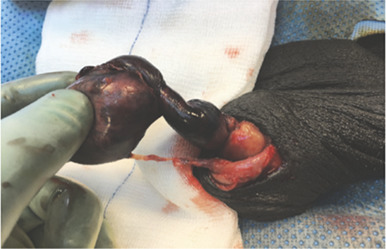
Recurrent testicular torsion following previous surgical exploration and management of testicular torsion is a rarely reported event. Previous testicular surgery does not guarantee permanent fixation of the testis, even after bilateral orchidopexy. Failure to consider the rare possibility of RTT may delay diagnosis and result in testicular loss.
Diphallia: literature review and proposed surgical classification system
- Pages: 2053-2065
- First Published: 09 June 2022
SURGICAL EDUCATION AND TRAINING
Development of a novel behaviourally anchored instrument for the assessment of surgical trainees
- Pages: 2066-2071
- First Published: 17 May 2022
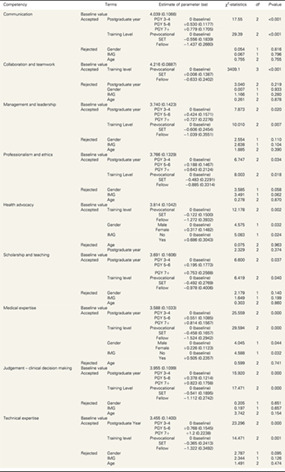
A novel assessment instrument was designed around the JDocs framework using 48 behaviourally anchored questions. Trainees and supervisors participated in the study and we identified the factors that correlate with scoring higher or lower in each of the nine surgical competencies. This pilot study has provided an opportunity to explore a new assessment instrument for surgical trainees and will potentially be helpful in early identification of underperforming trainee, or its use as a selection tool for formal training programs.
Online training module for micro suturing incorporating motor imagery and mental practice: a design and development research study
- Pages: 2072-2081
- First Published: 17 May 2022
Age of the leftie: the lived experience of left-handed surgeons
- Pages: 2082-2087
- First Published: 06 June 2022
Learning and teaching stage 4 clinical decision making: progression from novice to expert
- Pages: 2088-2093
- First Published: 08 August 2022
Impact of COVID-19, gender, race, specialty and seniority on mental health during surgical training: an international study
- Pages: 2094-2101
- First Published: 18 August 2022
How to minimize the impact of COVID-19 on laparoendoscopic single-site surgery training?
- Pages: 2102-2108
- First Published: 20 May 2022

COVID-19 pandemic has been affecting healthcare systems significantly on every aspect, and laparoendoscopic single-site surgery (LESS) on-site training is no exception. Thus, we have proposed a modified LESS surgical training course, enabling the trainees to keep on training and improve surgical practical skills during the pandemic.
UPPER GUT
Gastrectomy mortality in Australia
- Pages: 2109-2114
- First Published: 18 February 2022
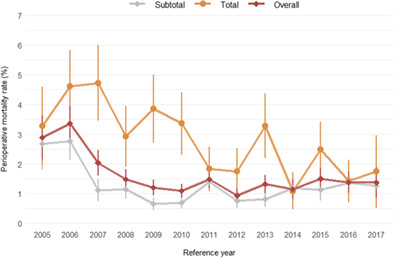
This retrospective, population-based cohort study was conducted to determine the Australian national gastrectomy perioperative mortality rate (POMR). Logistic regression models were compared using de-identified procedural data between 1 July 2005 and 30 June 2017 from the Australian Institute of Health and Welfare. Australian gastrectomy POMRs are favourable when compared to international cohorts. Outcomes were consistent between states and territories, and metropolitan and regional centres. Progressive centralization of gastrectomy was demonstrated without evidence of improved outcomes.
Management of oesophageal impaction of button batteries in Queensland
- Pages: 2115-2122
- First Published: 03 April 2022
Outcomes of 325 one anastomosis gastric bypass operations: an Australian case series
- Pages: 2123-2128
- First Published: 01 May 2022
In this real world Australian series of 325 One Anastomosis Gastric Bypass patients with 1 to 3.5 years follow up, a median excess weight loss of 74.2% was observed with an overall re-operation rate of 4.9%. The findings were comparable to more common procedures in terms of efficacy and safety.
Bariatric surgery in a public hospital: a 10-year experience
- Pages: 2129-2136
- First Published: 23 May 2022

This study reports our 10-year experience from a high volume public bariatric service which delivers multi-disciplinary care for primary and revisional procedures with mid- to long-term follow-up. This study confirms that bariatric surgery in Australia can be delivered effectively in resource constrained public health system with outcomes similar to private sector.
Clinicopathologic and survival differences between adenocarcinoma of the distal oesophagus and gastro-oesophageal junction
- Pages: 2137-2142
- First Published: 30 May 2022
Loop and drain technique for prevention of surgical site infection in upper gastrointestinal surgery
- Pages: 2143-2148
- First Published: 29 July 2022
HEPATOPANCREATICOBILIARY SURGERY
Recurrence patterns predict survival after resection of colorectal liver metastases
- Pages: 2149-2156
- First Published: 06 June 2022

This study evaluates the recurrence patterns after resection of CRLM and its association with survival. A retrospective review of prospectively collected data of patients with CRLM managed with curative-intent resection from January 2007 to December 2017 was performed. The timing and initial sites of recurrence are prognostic factors in determining survival after curative-intent resection of CRLM.
Laparoscopic versus open caudate lobe liver resections: a 1:2 propensity score-matched controlled study based on a single institution experience
- Pages: 2157-2162
- First Published: 12 June 2022

This study shows that laparoscopic caudate lobe resection can be done safely when performed by experienced surgeons and associated with decreased blood loss and shorter perioperative stay compared to open caudate lobe resection using a 1:2 propensity score-matched controlled study based on our single institution experience.
Development of diaphragmatic hernia following hepatectomy
- Pages: 2163-2166
- First Published: 03 August 2022
Could it be groove pancreatitis? A frequently misdiagnosed condition with a surgical solution
- Pages: 2167-2173
- First Published: 02 August 2022
A retrospective analysis of magnetic resonance cholangiopancreatography investigating gallstones in a contemporary surgical setting
- Pages: 2174-2179
- First Published: 29 June 2022
COLORECTAL SURGERY
Restorative proctocolectomy with ileal pouch-anal anastomosis in elderly patients – is advanced age a contraindication?
- Pages: 2180-2184
- First Published: 18 April 2022

Ileal pouch-anal anastomosis (IPAA) can be safely performed in patients with ulcerative colitis (UC) over 50 years old, with good outcomes and quality of life (QOL). However, pouch retention rates decrease for patients over 70 years. Stapled anastomosis increases the chance of pouch retention and should be recommended as long as the distal rectum does not carry dysplasia.
Robotic pelvic side-wall dissection and en-bloc excision for locally advanced and recurrent rectal cancer: outcomes on feasibility and safety
- Pages: 2185-2191
- First Published: 12 May 2022
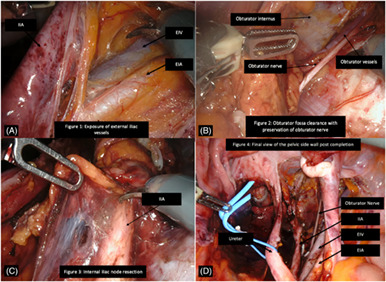
Improved local recurrence rates have been identified in patients undergoing lateral pelvic lymph node dissections (LPND) in addition to total mesorectal excision for advanced lower rectal cancer. This series demonstrates the practicality and the safety of the robotic approach in the introduction of this technique for en-bloc resection or LPND.
Cytoreductive surgery and hyperthermic intraperitoneal chemotherapy for colorectal peritoneal metastases in an elderly population: outcomes from a single centre
- Pages: 2192-2198
- First Published: 09 May 2022
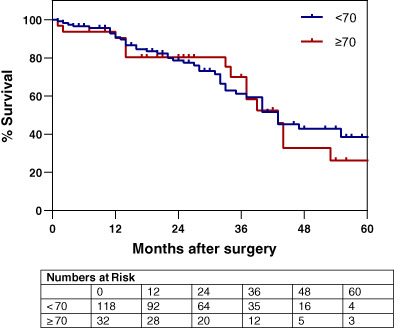
The absolute numbers of elderly patients with colorectal peritoneal metastases is expected to increase. We retrospectively analysed CRS and HIPEC data from a single institution over a 10-year period, and compared outcomes between patients under and over 70 years of age. We concluded that in appropriately selected patients, CRS and HIPEC is safe, feasible and results in justifiable oncological outcomes for patients over the age of 70.
A snapshot of intraoperative conditions to predict prolonged postoperative ileus after colorectal surgery
- Pages: 2199-2206
- First Published: 17 May 2022
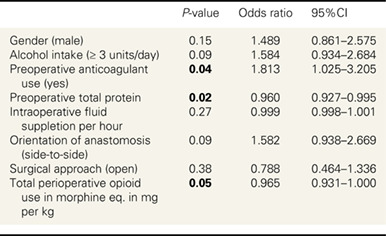
The influence of preoperative factors on PPOI has been well documented, but little is known about the impact of intraoperative conditions. This study collected intraoperative data during a one-off snapshot measure. We suggests that intraoperative conditions may contribute to the development of PPOI, but this could not be confirmed in the multivariate analysis.
Chronic rectal anastomosis complications prior to ileostomy reversal: development of a pilot classification system and associated outcomes
- Pages: 2207-2212
- First Published: 31 May 2022
GENERAL SURGERY
Open abdomen: is a dedicated emergency surgery team needed? A single center retrospective study on 141 consecutive patients
- Pages: 2213-2217
- First Published: 30 July 2022
Prophylactic onlay mesh at emergency laparotomy: promising early outcomes with long-acting synthetic resorbable mesh
- Pages: 2218-2223
- First Published: 01 August 2022

Careful surgical strategy is paramount in balancing the prevention of fascial dehiscence, incisional hernia and fear of additional mesh-related wound complications post-laparotomy. This study aims to review early outcomes of patients undergoing an emergency laparotomy with prophylactic synthetic TIGR® mesh, used to reduce early fascial dehiscence and potential subsequent incisional hernia.
Splanchnic venous thrombosis: aetiologies and a review of the literature
- Pages: 2224-2228
- First Published: 25 June 2022
ORTHOPAEDIC SURGERY
Between-hospital and between-surgeon variation in thresholds for hip and knee replacement
- Pages: 2229-2234
- First Published: 31 May 2022

This study evaluated the hospital- and surgeon-level variation in the severity of patient-reported symptoms prior to total hip and total knee replacement surgery and found only negligible between-surgeon variation in symptom severity, but significant differences between public and private hospital settings. These data indicate that surgeons are applying consistent surgical thresholds to hip and knee joint replacement patients. Threshold differences between public and private hospitals may reflect under- or over-treatment and differences in access to care in these settings.
Mitigation of postoperative urinary retention among total joint replacement patients using the ERAS protocol and applying risk-stratified catheterization
- Pages: 2235-2241
- First Published: 18 June 2022

Reducing in-hospital complications post TJA is both crucial and urgent in enhancing treatment efficacy and patient experience. Herein, under ERAS protocol, the number of POUR cases that required bladder catheterization was 3.4% for TKA and 10.1% for THA, which is in accordance with other reports. We also found that male gender, advanced age, THA, and SIP-IBC all significantly elevated POUR development risk.
Virtual arthroplasty clinic: a single centre experience: commentary on progress, cost savings and patient retention
- Pages: 2242-2246
- First Published: 21 June 2022
Modified iliotibial band tenodesis versus lateral extracapsular tenodesis, to augment anterior cruciate ligament reconstruction: a 2-year randomized controlled trial
- Pages: 2247-2253
- First Published: 27 May 2022
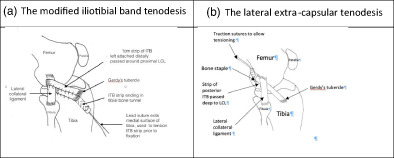
A significant number of ACL injuries are associated with damage to the anterolateral complex (ALC) of the knee and this damage is responsible for failure of some ACL reconstructions. There are a number of surgical techniques available to correct this damage, but no research comparing their relative effectiveness. This study is the first randomized controlled trial (RCT) to compare 2 different techniques for reconstructing the ALC and demonstrates that the modified iliotibial band tenodesis is more effective than the lateral extracapsular tenodesis, when used to augment an ACL reconstruction, in terms of recurrence, meniscal tears and patient reported outcomes.
Tibial metaphyseal cones combined with short stems perform as well as long stems in revision total knee arthroplasty
- Pages: 2254-2260
- First Published: 27 June 2022
Opioid use and patient outcomes in an Australian hip and knee arthroplasty cohort
- Pages: 2261-2268
- First Published: 08 August 2022
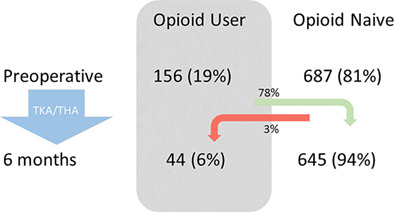
In this Australian privately insured cohort opioid use was reported by 19% preoperatively and 7% at 6 months. Pre-operative opioid use was the strongest risk factor for opioid use at 6 months, increasing the odds 7–15 times. Preoperative opioid use was not associated with inferior outcomes or satisfaction.
PLASTIC AND RECONSTRUCTIVE SURGERY
Microbiology of surgical site infections (SSIs) following skin cancer surgery
- Pages: 2269-2273
- First Published: 01 August 2022
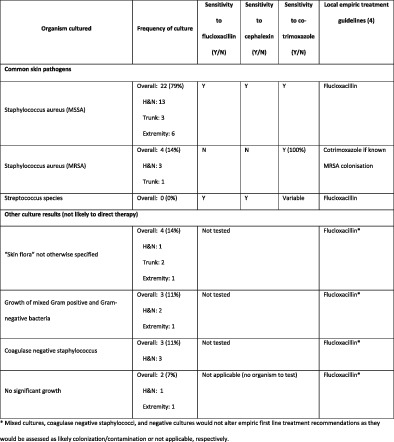
Surgical site infections (SSIs) represent one of the most common and potentially preventable sources of morbidity and healthcare cost escalation associated with skin cancer surgery. To our knowledge this is the first comprehensive report of SSI microbiology following skin cancer surgery. The overwhelmingly predominant organisms were Staphylococcus sp. (76%), with the rate of MRSA approaching prevalence warranting empiric first-line treatment.
Characterization of costal cartilage allografts
- Pages: 2274-2279
- First Published: 09 August 2022
Clinical application of keystone design perforator Island flap (KDPIF) in trunk defects: a retrospective study
- Pages: 2280-2285
- First Published: 10 July 2022
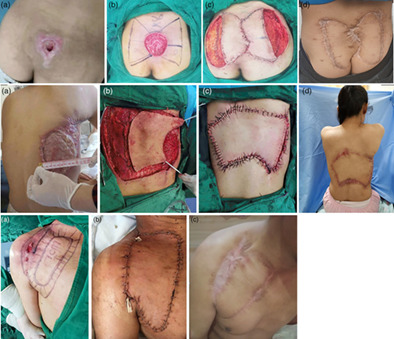
- The keystone design perforator island flap (KDPIF) was applied in the reconstruction of soft-tissue defect in various regions of the body, clinical effectiveness of the KDPIF was described by use the acronym PACE (Pain free, Aesthetically acceptable, Lower complication and Economically effectiveness).
- As a local-regional flap, KDPIF is completely relied on the soft tissue around the defect as the donor site and corresponding characteristics of soft tissue condition should be cautiously considered while designing and applying the KDPIF at different locations. It is not recommended to larger defect with less movability of surrounding soft tissue which is not enough to cover the defect. Another contraindication should be mention based on our experience is Morel–Lavallee injury of the donor site which could compromise the subcutaneous perforators and result in flap failure. Relative contraindications include local situation compromise the vascularity and laxity of the flap such as wounds that have been irradiated, or undergone significant undermining, or currently in an inflammatory status.
- Preoperative design of KDPIF should be individualized regarding patient's general condition. Special positioning is required after operation to reduce position related wound tension and postoperative careful observation.
OTOLARYNGOLOGY HEAD AND NECK SURGERY
COVID-19 vaccine associated cervical lymphadenopathy: a case series
- Pages: 2286-2291
- First Published: 19 May 2022
Cost-minimisation analysis of polysomnography and pulse oximetry in a risk stratification protocol for paediatric adenotonsillectomy
- Pages: 2292-2298
- First Published: 20 June 2022
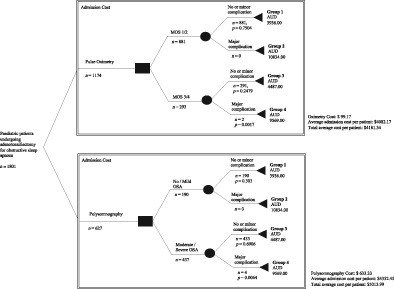
This cost-minimisation analysis examines costs associated with pre-operative overnight pulse oximetry and polysomnography in triaging paediatric patients undergoing AT for OSA to either a secondary or quaternary Australian hospital site. Within the scope of this partial economic evaluation, this study finds a small additional cost for a model of care involving overnight oximetry as a pre-operative triage tool, balanced by the reduced cost of care in a lower acuity centre for low-risk patients and potential high cost of complications if all children are treated in a low acuity centre. This supports oximetry in peri-operative risk stratification for paediatric AT from a financial perspective.
Survival outcomes of perineural spread in head and neck cutaneous squamous cell carcinoma
- Pages: 2299-2304
- First Published: 22 July 2022
VASCULAR SURGERY
Frail patients having vascular surgery during the early COVID-19 pandemic experienced high rates of adverse perioperative events and amputation
- Pages: 2305-2311
- First Published: 08 June 2022
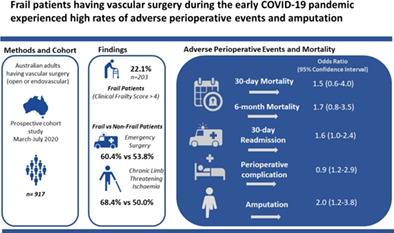
This multicentre cohort study demonstrated that pre-operative frailty was associated with adverse perioperative outcomes and increased major amputation but not mortality during the early COVID-19 pandemic. This outcome disparity highlights the importance of targeted interventions to optimise the care of older, frail patients, especially in times of healthcare stress.
Embolic phenomena to the limbs are an independent predictor of in-hospital mortality from infective endocarditis
- Pages: 2312-2317
- First Published: 28 July 2022
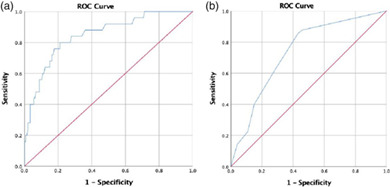
Infective Endocarditis is a morbid condition with high mortality. We present a retrospective analysis of one hundred and seventy-two patients who presented to our institution with Infective Endocarditis. Multivariable analysis demonstrated that patients presenting with signs of embolic phenomena to the limbs was an independent predictor of mortality.
HOW TO DO IT
How to do: superior rectal artery sparing anterior resection for sigmoid colon cancer – surgical option for vasculopathic patients
- Pages: 2318-2319
- First Published: 30 April 2022
IMAGES FOR SURGEONS
Gastric outlet obstruction secondary to omental fat in a parahiatal hernia resulting in a gastric volvulus
- Pages: 2320-2321
- First Published: 15 December 2021
Pouch volvulus after laparoscopic ileal pouch anal anastomosis: the Achilles heel?
- Pages: 2322-2323
- First Published: 27 December 2021
Strangulated stoma prolapse: surgical treatment conserving proximal ileostomy
- Pages: 2324-2325
- First Published: 28 December 2021
Primary duodenal liposarcoma, an exceedlingly rare small bowel tumour
- Pages: 2326-2327
- First Published: 29 December 2021
Resection of an abdominal wall rectal cancer recurrence with posterior component separation and transverse abdominis release following image-guided botulinum toxin A injection
- Pages: 2328-2330
- First Published: 29 December 2021
Caecal adenocarcinoma presenting as vulvar Paget's disease
- Pages: 2331-2333
- First Published: 30 December 2021
Immediate trauma splenectomy following video-assisted thoracoscopic surgery
- Pages: 2334-2335
- First Published: 14 February 2022
Concomitant anomalous coronary artery and a large primary myxofibrosarcoma of the heart
- Pages: 2336-2337
- First Published: 18 January 2022
Recalcitrant oesophageal stricture caused by accidental alkaline ingestion requiring McKeown oesophagectomy
- Pages: 2338-2340
- First Published: 18 January 2022
Gastrointestinal tuberculosis presenting as a diagnostic dilemma with unusual sequalae of Posterior Reversible Encephalopathy Syndrome
- Pages: 2341-2343
- First Published: 10 January 2022
Perianal sinus as a unique presentation of a recurrent presacral epidermoid cyst
- Pages: 2344-2345
- First Published: 10 January 2022
Idiopathic fat necrosis of scrotum: an important differential of childhood scrotal pain
- Pages: 2348-2349
- First Published: 17 January 2022
Endoscopic and surgical management of acute haemorrhagic rectal ulcers
- Pages: 2350-2352
- First Published: 20 January 2022
Spontaneous involvement of penile shaft (corpora cavernosa) by anal fistula
- Pages: 2353-2355
- First Published: 19 January 2022
Retroperitoneal lymph node dissection as salvage surgery in metachronous nodal recurrence in colorectal cancer
- Pages: 2356-2358
- First Published: 19 January 2022
Prostatic urethral calculus after water vapour thermal therapy of the prostate
- Pages: 2359-2360
- First Published: 18 January 2022
Transabdominal preperitoneal hernia repair for incidental de Garengeot's hernia
- Pages: 2363-2364
- First Published: 19 January 2022
Laparoscopic-assisted deep inferior epigastric artery perforator (DIEP) flap in breast reconstruction
- Pages: 2365-2367
- First Published: 24 January 2022
Utilization of a transanal approach to facilitate beyond total mesorectal excision dissection including en bloc subcortical high sacrectomy for locally recurrent rectal cancer
- Pages: 2368-2370
- First Published: 26 January 2022
Colonic gastro-intestinal stromal tumours: a rare cause of gastro-intestinal bleeding
- Pages: 2371-2372
- First Published: 25 January 2022
Cryptogenic multifocal ulcerous stenosing enteritis: a difficult diagnosis
- Pages: 2373-2375
- First Published: 27 January 2022
Large extraperitoneal inguinal bladder hernia causing urinary retention
- Pages: 2376-2377
- First Published: 28 January 2022
Pan-colonic ischemia after transanal irrigation: unexpected side effect
- Pages: 2378-2379
- First Published: 25 January 2022
Massive myxopapillary ependymoma of the gluteal cleft
- Pages: 2380-2381
- First Published: 01 February 2022
Massive localized lymphoedema: a complication of obesity
- Pages: 2382-2384
- First Published: 21 January 2022
Mesenteric ischaemia: a rare complication of scleroderma
- Pages: 2385-2386
- First Published: 22 January 2022
Life-threatening presentation of complicated intra-abdominal desmoid tumour in a young man without a family history of familial adenomatous polyposis
- Pages: 2387-2389
- First Published: 24 January 2022
Pancreaticoduodenal artery pseudoaneurysm in the setting of median arcuate ligament syndrome
- Pages: 2390-2392
- First Published: 28 January 2022
LETTERS TO THE EDITOR
The paucity of management guidelines for postoperative chylothorax
- Page: 2393
- First Published: 12 September 2022
Re: COVID-19 vaccine associated cervical lymphadenopathy: correspondence
- Page: 2394
- First Published: 12 September 2022
Is there a need for more detailed national datasets on acute pancreatitis subtypes? The Mexican perspective
- Pages: 2395-2396
- First Published: 12 September 2022
Treatment of a recurrent rectal anastomotic stenosis
- Pages: 2397-2398
- First Published: 12 September 2022




